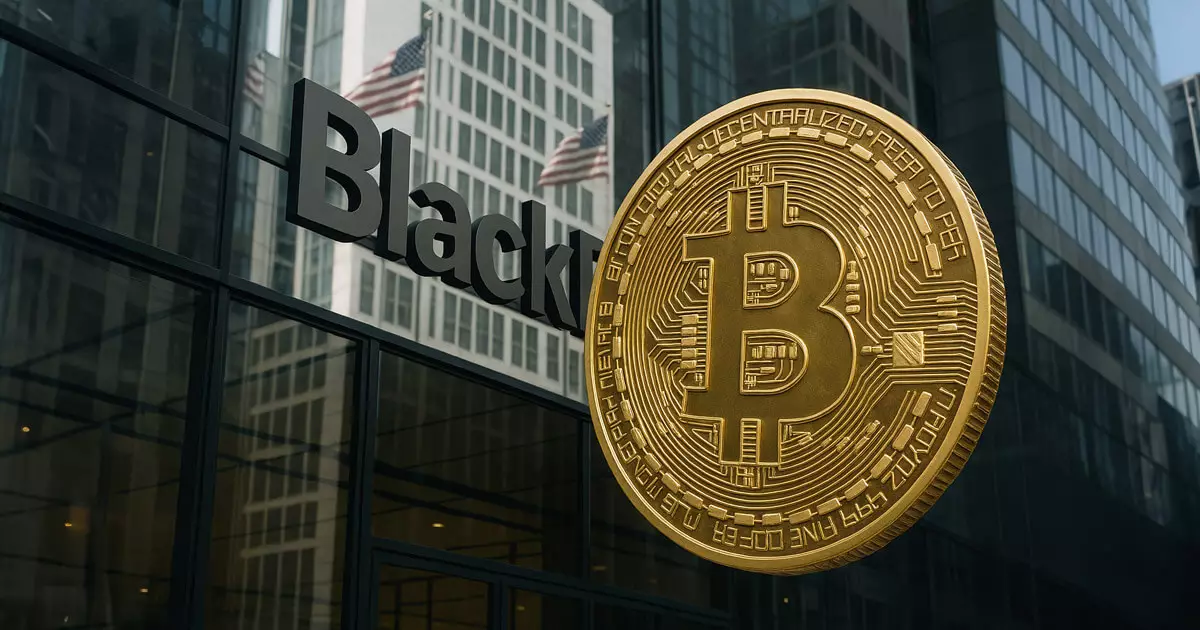The latest announcement from BlackRock regarding the iShares Bitcoin Trust (IBIT) has sent ripples through the world of digital assets. With the formal inclusion of Anchorage Digital Bank as a secondary custodian, the asset management giant is making a calculated move that defies the traditional single-custodian framework. While this expansion might initially seem like a mere operational adjustment, it speaks volumes about BlackRock’s strategic foresight amidst an evolving regulatory landscape and a burgeoning interest in cryptocurrency investment.
Introduced through a Form 8-K filing, this dual-custodial structure portrays BlackRock’s commitment to enhancing risk mitigation protocols—an aspect that is increasingly vital in the unpredictable waters of digital asset management. Coinbase will retain the role of primary custodian, yet the strategic addition of Anchorage—an institution regulated by the Office of the Comptroller of the Currency (OCC)—stands as an assurance of compliance and stability in a field notorious for its volatility.
The Significance of a Dual Custody Model
At a glance, establishing a dual-custodial arrangement could be perceived as a precautionary measure. However, it also positions BlackRock to scale upwards with increased Bitcoin holdings steadily flowing into its ETF. The elevation of custodial operations isn’t just about efficiency; it represents a core shift in how financial giants like BlackRock approach digital currency and asset management. By instituting Anchorage as a standby custodian, the trust is inherently safeguarding itself against potential operational hiccups or regulatory challenges that could arise.
While Coinbase continues to manage day-to-day custodial activities, Anchorage’s role as an auxiliary custodian adds a layer of resilience. This strategic foresight is crucial as institutional participation in cryptocurrencies continues to grow, and the need for robust operational frameworks becomes more pressing.
A Closer Look at Blockchain Security Measures
One of the critical aspects of the agreement revolves around the stringent security protocols that Anchorage is mandated to follow. Utilizing cold storage solutions for all private keys, Anchorage is reinforcing the imperative of protecting digital assets from hacking attempts and unauthorized access. This rigorous approach not only aligns with best practices in fintech but adds a credible weight to BlackRock’s commitment to security. The emphasis on insurance coverage and clear operational responsibilities in the event of blockchain forks reflects a meticulous approach to nurturing trust among investors and stakeholders.
The operational and regulatory landscape surrounding cryptocurrencies is in constant flux. In this context, the adoption of a multi-custodial approach could be interpreted as a prudent strategy to satisfy not only the risk concerns of institutional investors but also the broader investor community that increasingly demands higher standards of fiduciary responsibility.
Investment Strategy Amidst Changing Regulations
While the announcement signifies a shift in custodial strategy, BlackRock maintains that this transition will not alter the trust’s core investment strategy or operational mechanics. The ongoing tweaked structure encapsulates their intention to refine custodial security while preserving their established investment objectives. This careful calibrating indicates an understanding of the delicate balance that must be maintained between innovation and stability.
Moreover, the regulatory environment affecting digital assets is still very much a moving target. By aligning itself with a federally regulated entity like Anchorage, BlackRock is not only demonstrating compliance but is actively scaffolding its operations to weather the unforeseen twists of future regulatory frameworks. It’s a calculated gamble that could very well pay off as the demand for trustworthy custodianship grows.
A Step Towards Institutional Acceptance of Cryptocurrencies
The institutional appetite for cryptocurrencies has expanded rapidly in recent years, and BlackRock’s move to formalize a custodial framework that champions diversification signals their acknowledgment of this transformation. By taking proactive measures to bolster their custodial setup, they are not merely reacting to market conditions; they are leading the charge towards a future where cryptocurrencies could be as commonplace as traditional assets, a prospect that’s not only enticing but transformative.
The financial world is on the cusp of change, and BlackRock seems poised to ride this wave rather than be swept away by it. The decision to bring in Anchorage as an additional custodian could very well be the hallmark of a new era in institutional investing—one where crypto assets are integrated seamlessly into mainstream finance. The implications extend beyond mere asset custody; they encourage a rethink of how credibility, governance, and security within the realm of digital currencies will shape the future of investment practices.
















Leave a Reply